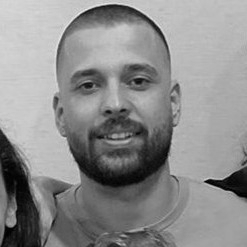Case Study
BR - SP
2009 - 2025
GDA - Appoitment management
www.dasa.com.br
Nov 2021 / Nov 2022
Type: Responsive platform
Comissioned by: Dasa S.A


Related metrics
-
Rollout/ Share
-
TMO
-
Csat
-
No show
Context
An interface to a backend service platform that manages appointments for all Dasa (hospitals, diagnostic units and mobile units), is responsable to keep schedules running in different contexts by interconnecting with other microservices of the company.
It serves an internal team who connect with all the company's stakeholders such as doctors, unit managers and call center staff (around 30 people).
Challenge
-
Realise a rollout of around 40 diagnostics brands to this new platform
-
Turn the product integrate with others backend and frontends platforms
-
Create a interface interactive and automatization to solve some needs of the user
-
Reduce the manual work to set parameters
Team

Davi Januário
Product Designer

Hermano Cavalcanti
Project Manager [1]

Leonardo Lopes
Tech Leader [1]

Roberto Martini
Project Manager [2]

Guilherme Davi Lima
Tech Leader [2]
My responsabilities
Participated in two important moments:
1 - the creation of MVP and after three months of launching,
2 - I continued to make improvements in features and creation news.
Impacts
Result of the all development done during the period I worked in the squad.
from 35% to 70%
Rollout / Share increase
87
Csat
Work effort
Some numbers to make the effort during my time in this squad tangible.
• 12 months (Nov 2021/ Nov 2022)
• 3 quarter
• 24 sprints
• 15 days each sprint
• Highly complex tasks
4 - 8
Initiatives
10 - 20
Epics
40 - 80
Stories
120 - 240
Tasks
Example
of outcome
High complexity
Example
of outcome
High complexity
Pain
High use of manual work when is necessary to close or cancel schedules registered in the system, as it is necessary to carry out the action one by one, increasing the TMO.
Job to Be Done
Finalize batch schedules, which contain tests, dates and times already defined according to requests from doctors, clinics and hospitals.
Design process
BR - SP
2009 - 2024
Tools
Design
process
Duration
1 sprint (15 dias)
Tools



00%
Percentage of Complete Medical Records: Percentage of patient profiles with complete, up-to-date medical histories integrated into the platform
We observed a significant operational bottleneck in the scheduling process:
-
480 minutes: Average time spent retrieving patient history during consultations.
-
Manual work to close or cancel appointments was done one by one, increasing handling time (TMO) and operational cost.
0.0/ 5
Average Time for Data Retrieval: Time taken to retrieve a patient’s medical history during a consultation
-
The lack of batch processing made the internal team's work slower and more prone to errors. Adding a batch scheduling feature would reduce repetitive manual tasks, increase efficiency, and improve the scheduling experience for staff.
Based on concept and usability tests, we identified five key issues:
-
Manual process: Closing or canceling appointments required multiple steps per case.
-
No batch actions: Users had to manage each appointment individually.
-
System integration issues: Slow interaction with other services (e.g., doctor availability).
-
Small support team: High manual workload was unsustainable.
-
Error-prone: Manual updates increased the chance of mistakes and inconsistencies.
-
We redesigned the scheduling system with these improvements:
-
Batch actions: One-click tools to finalize or cancel multiple appointments at once.
-
Improved integration: Smoother communication with related services to reduce friction.
-
Workflow automation: Prioritized tasks and reduced steps to improve staff productivity.
-
Error prevention: Built-in checks to catch mistakes before confirmation.
Expected impact after implementation:
-
TMO: Reduction of up to 80% in handling time.
-
CSAT/NPS: Increase of 15–20% due to faster, more reliable service.
-
No-show rate: Decrease of 10–12% through quicker rescheduling and error reduction.
-
Data retrieval: Drop from 480 min to around 15.3 sec, improving consultation flow.
00%
Percentage of Complete Medical Records: Percentage of patient profiles with complete, up-to-date medical histories integrated into the platform
0.0/ 5
Average Time for Data Retrieval: Time taken to retrieve a patient’s medical history during a consultation
-


Learning
Integration and Collaboration: Developing a platform that seamlessly integrates with various backend and frontend systems highlighted the importance of robust architecture and effective collaboration with other teams. It taught me the critical role of interoperability in enhancing the functionality of healthcare systems.
User-Centered Automation: Designing an interface that automates tasks to reduce manual work emphasized the value of user-centered design. This experience reinforced the need to understand user pain points deeply and address them through innovative solutions that enhance efficiency and user satisfaction.
Interactive Design: Creating an interactive interface to meet user needs was a crucial aspect of the project. It demonstrated the importance of intuitive design that facilitates ease of use and improves the overall user experience, especially in a high-stakes healthcare environment..

